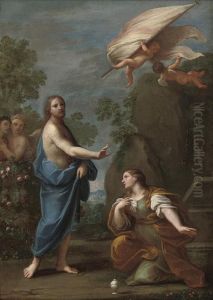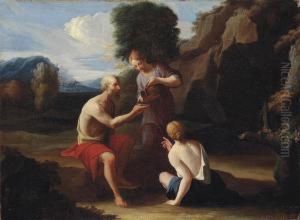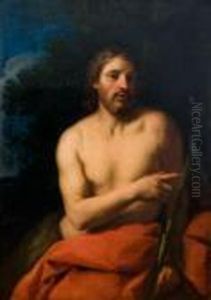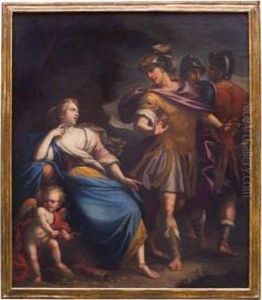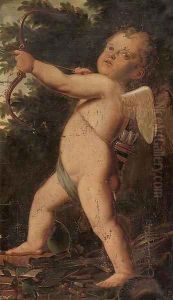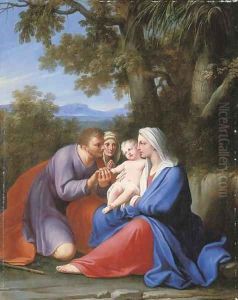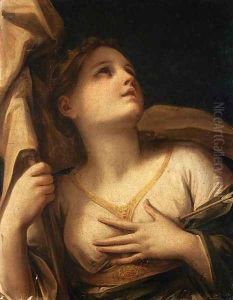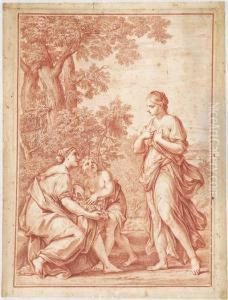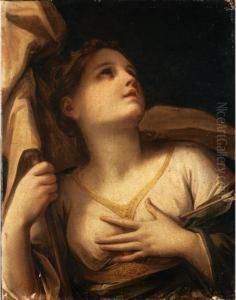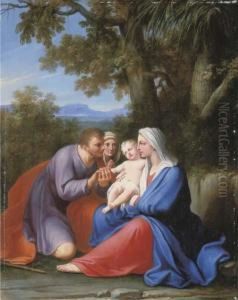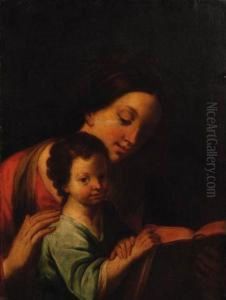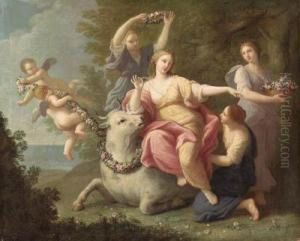Marcantonio Franceschini Paintings
Marcantonio Franceschini was an Italian painter of the Baroque period, born on April 5, 1648, in Bologna, Italy. He was a prominent figure in the Bolognese School of painting, which provided a counterpoint to the Roman and Florentine schools that were more dominant in the 17th century. Franceschini was a student of Carlo Cignani, whose influence is evident in his work, particularly in his use of color and light.
Franceschini's body of work includes religious and mythological scenes, often on a grand scale. He was known for his ability to create dynamic compositions with a sense of movement, which was a characteristic of the Baroque style. His paintings can be found in many churches and palaces across Italy, showcasing his skill in both fresco and oil painting.
Throughout his career, Franceschini collaborated with other artists, including the quadraturista (a painter of architectural perspectives) Giovanni Giacomo Monti. Their joint works are celebrated examples of Baroque integration of perspective painting with figural composition, creating an illusion of three-dimensional space on flat surfaces.
In addition to his work as a painter, Franceschini was also involved in the Accademia Clementina, an institution dedicated to the arts in Bologna. He served as the Principe, or head, of the academy, which demonstrated his influence and standing within the artistic community of his time.
Franceschini's works were commissioned by both ecclesiastical patrons and members of the nobility, reflecting his reputation and the demand for his artistic talents. His legacy includes training and influencing a number of pupils, who continued to propagate the Bolognese style in the late Baroque period.
Marcantonio Franceschini passed away on December 24, 1729, in Bologna. Today, his works remain an important part of the Baroque era's artistic heritage and are studied for their contribution to the development of Italian art in the period.




